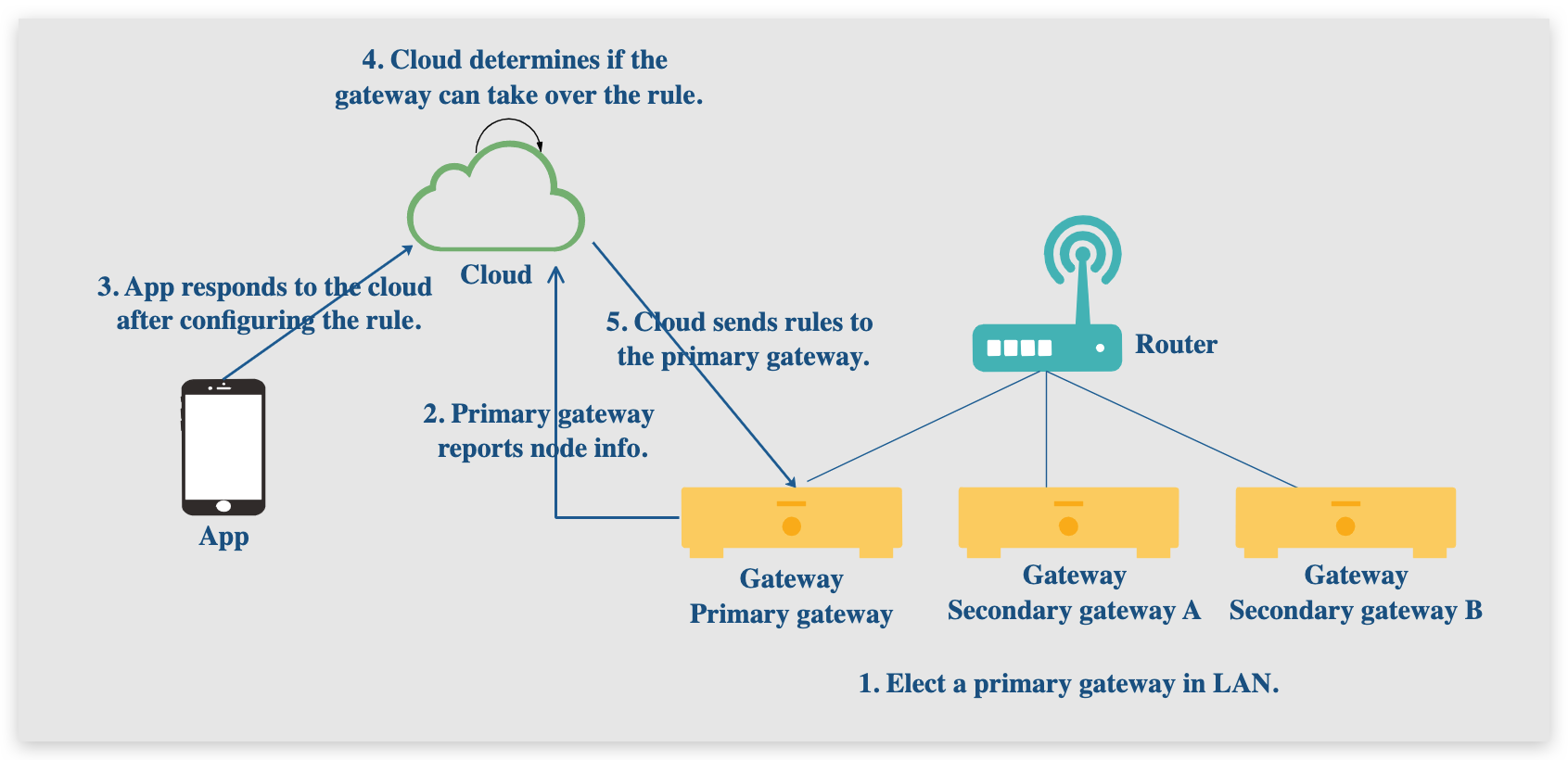LAN Linkage
Last Updated on : 2024-06-25 09:29:52download
Overview
Concepts
-
Tap-to-run and automation: Both are a type of linkage, but differ in the following ways.
- Tap-to-run does not contain conditions, but actions.
- Automation contains both conditions and actions. When a condition is met, an action is taken.
-
LAN linkage: The gateway runs the linkage. It differs from local linkage in that the devices involved in the condition and action for LAN linkage are connected to different gateways that belong to the same home and are in the same LAN.
-
Cloud linkage: The cloud runs the linkage. Linkage execution depends on the connection to the cloud. For a linkage involves multiple gateways, if the gateway cannot take over the linkage, this is cloud linkage.
Scenarios
- Applies to all scenarios.
How it works
-
After a linkage is created:
-
For a linkage involving multiple gateways, if the cloud determines the primary gateway can take over the linkage, it sends the rule to the primary gateway. After the primary gateway takes over the rule, it takes care of everything about the linkage in the LAN network. This is LAN linkage.
-
If the cloud determines the primary gateway cannot take over the linkage, it does not send the rule to the primary gateway. The cloud takes care of everything about the linkage. This is cloud linkage.

-
-
To run LAN linkage, the following requirements must be met:
- Gateways associated with the condition and action belong to the same home and are in the same LAN.
- At least one gateway runs Linux.
- The condition is tap-to-run, a schedule, or a change in device status.
- The action is a device operation, a delay, or tap-to-run.
Development guide
How to
The SDK automatically performs initialization internally. No additional interface needs to be called.
Things to note
- Reliability: Local linkage > LAN linkage > cloud linkage Local linkage is recommended to ensure reliable performance.
- Try to use less logic for easy understanding. For example:
- Not recommended: A links to B, and B links to C.
- Recommended: A links to B and C.
Is this page helpful?
YesFeedbackIs this page helpful?
YesFeedback





